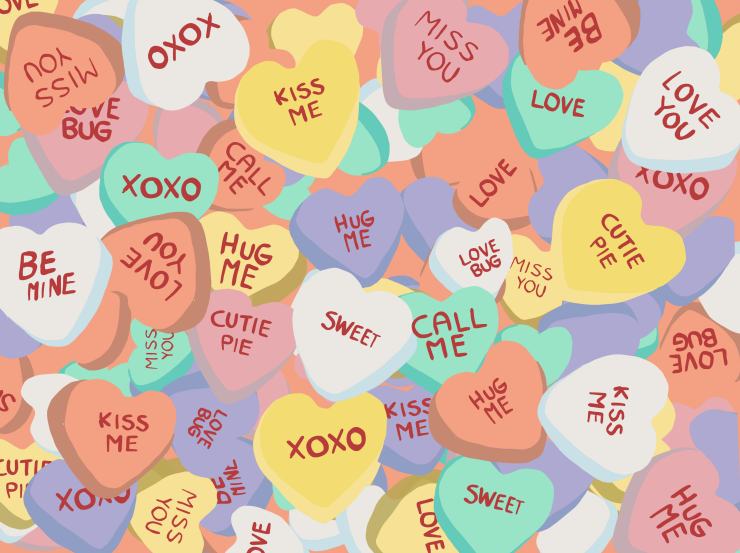The heart symbol is an enduring icon, seen in many cultures as a symbol of love. Hearts can be found on a wide range of objects today, and their use dates back over 5,000 years.
Historians debate where the heart symbol originated, as the shape has been found in various ancient civilizations. However, the first known appearance of the heart symbol was in art from the Indus Valley civilization in the sixth century B.C. It was likely used to represent the leaves of fig plants, ivies or water lilies, which were all heart-shaped. Hearts also appeared on coins in the North African city-state of Cyrene, which made its money selling the heart-shaped seeds of the silphium plant. Ivies were seen as a symbol of fidelity in the ancient world, and silphium was used as an early form of birth control, so it has been theorized that this may have caused the symbol’s association with love. Excavations of the Persian city of Ctesiphon discovered the heart symbol in many reliefs, although archaeologists have been unable to determine what it was representing.
It has also been theorized that the heart shape originated from the writings of Aristotle and Galen, who both described the heart as having three chambers with a dent in the middle. Some historians have argued that Europeans in the Middle Ages created the heart symbol as a way to visualize the heart described in these writings.
It is unclear exactly why the heart is associated with love, but the most popular theory is that it is because a person’s heart beats faster when they experience strong emotions such as love. The first known depiction of the heart representing love was in the 13th-century French book “Roman de la Poire,” which featured an illustration of a man handing a woman his heart as a symbol of his love. The heart in this illustration did not have the heart shape, instead having the shape of a pine cone, which Europeans believed the heart looked like. The idea that the heart represented love was spread by a 1305 painting in the Scrovegni Chapel, which showed the Christian virtue Caritas giving her heart to Jesus. This painting influenced many future artists, who created similar paintings in chapels all across Europe.
Hearts first became associated with the heart shape in 14th-century art, but were usually shown upside down. Some late 14th-century art began showing the heart facing right side up, which became common in the mid 15th century. Heart symbols were still relatively obscure at this point, usually only featured in art within European churches and on some family coat of arms. In the late 15th century, heart symbols began being featured on playing cards in Europe. This helped make the heart symbol widely recognizable, although most people did not associate the shape with the human heart.
The shape became more widely associated with the human heart in the 16th century, after many Lutheran churches began depicting the Luther Rose, which contained a heart in its center. Catholic churches in the 17th century began depicting the sacred heart of Jesus in their art, which also increased Europeans’ recognition of the heart shape.
It became common in 17th century Europe for couples to write love letters to each other, which were often decorated with hearts. This was expanded upon in 19th century Britain, where companies began selling greeting cards decorated with hearts to celebrate Valentine’s Day. This practice soon spread throughout Europe and the Americas and became a staple of Valentine’s Day celebrations. The large cultural influence of Western countries during the 19th and 20th century helped the heart symbol become well known across the world, and it remains widely recognized in most countries today.
What do you think of the heart symbol? Let us know in the comments below.





















































































